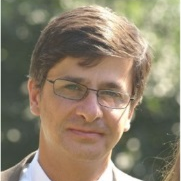Advances in Spillway Hydraulics: From Theory to Practice
A special issue of Water (ISSN 2073-4441). This special issue belongs to the section "Hydraulics and Hydrodynamics".
Deadline for manuscript submissions: closed (31 July 2022) | Viewed by 41568
Special Issue Editors
Interests: hydraulic engineering; hydraulic structures; dam hydraulics; hydropower; environmental hydraulics; experimental methods; physical modeling
Special Issues, Collections and Topics in MDPI journals
Interests: hydraulic engineering; hydraulic structures; environmental hydraulics; ecohydraulics; experimental methods; physical modeling; composite modeling; hydropower; flood evaluation and flood protection
Interests: hydraulic engineering; hydraulic structures; dam hydraulics and safety; hydropower; reservoir sedimentation; rock scour; flood protection and forecast; high-head-pressure conduits; coupled mechanical-hydraulic problems; physical modeling; river morphology and biodiversity
Special Issue Information
Dear Colleagues,
In the past decades, significant advances have been achieved in the field of hydraulic structures for dams, in particular water release structures including spillways with chutes and their terminal energy dissipators. In addition to recent innovative projects, a large number of older spillways have been reexamined with regard to their suitability to pass the revised design flood estimates. Of these, many contain features which create complex flow patterns and make prediction of spillway capacity and performance uncertain. On the other hand, safe and reliable spillways are of paramount importance, considering that many dam failures were caused by improperly designed spillways with insufficient discharge capacity. In addition to providing sufficient discharge capacity, the arrangement of the spillway must be such that releases do not erode or undermine the downstream toe of the dam and its abutments.
In particular, the past few decades have witnessed a significant development in spillway design and in the understanding of spillway hydraulics, for a variety of reasons, such as recent advances in construction technology (e.g., roller-compacted concrete and cemented soil dams for new projects or for rehabilitation), large-scale model studies making use of sophisticated instrumentation (e.g., conductivity or fiber-optical probes for measuring macroscopic and microscopic air-water flow features, optical and LiDAR techniques), computational fluid dynamics (CFD) modeling applied to complex designs, prototype experience, as well as composite or hybrid modeling.
This Special Issue focuses on recent advances in spillway hydraulics, covering theory and applications. Topics that have not been sufficiently covered in standard design guidance are also welcome, including practical design considerations, as well as new developments from the operation, maintenance, and inspection of spillways and respective intake or terminal structures.
Prof. Dr. Jorge Matos
Dr. Sébastien Erpicum
Prof. Dr. Anton J. Schleiss
Guest Editors
Manuscript Submission Information
Manuscripts should be submitted online at www.mdpi.com by registering and logging in to this website. Once you are registered, click here to go to the submission form. Manuscripts can be submitted until the deadline. All submissions that pass pre-check are peer-reviewed. Accepted papers will be published continuously in the journal (as soon as accepted) and will be listed together on the special issue website. Research articles, review articles as well as short communications are invited. For planned papers, a title and short abstract (about 100 words) can be sent to the Editorial Office for announcement on this website.
Submitted manuscripts should not have been published previously, nor be under consideration for publication elsewhere (except conference proceedings papers). All manuscripts are thoroughly refereed through a single-blind peer-review process. A guide for authors and other relevant information for submission of manuscripts is available on the Instructions for Authors page. Water is an international peer-reviewed open access semimonthly journal published by MDPI.
Please visit the Instructions for Authors page before submitting a manuscript. The Article Processing Charge (APC) for publication in this open access journal is 2600 CHF (Swiss Francs). Submitted papers should be well formatted and use good English. Authors may use MDPI's English editing service prior to publication or during author revisions.
Keywords
- hydraulic structures
- dams
- spillways
- weirs—gated or ungated
- chutes
- energy dissipators
- experimental modeling
- CFD modeling
- prototype tests
- case studies
Benefits of Publishing in a Special Issue
- Ease of navigation: Grouping papers by topic helps scholars navigate broad scope journals more efficiently.
- Greater discoverability: Special Issues support the reach and impact of scientific research. Articles in Special Issues are more discoverable and cited more frequently.
- Expansion of research network: Special Issues facilitate connections among authors, fostering scientific collaborations.
- External promotion: Articles in Special Issues are often promoted through the journal's social media, increasing their visibility.
- e-Book format: Special Issues with more than 10 articles can be published as dedicated e-books, ensuring wide and rapid dissemination.
Further information on MDPI's Special Issue polices can be found here.







